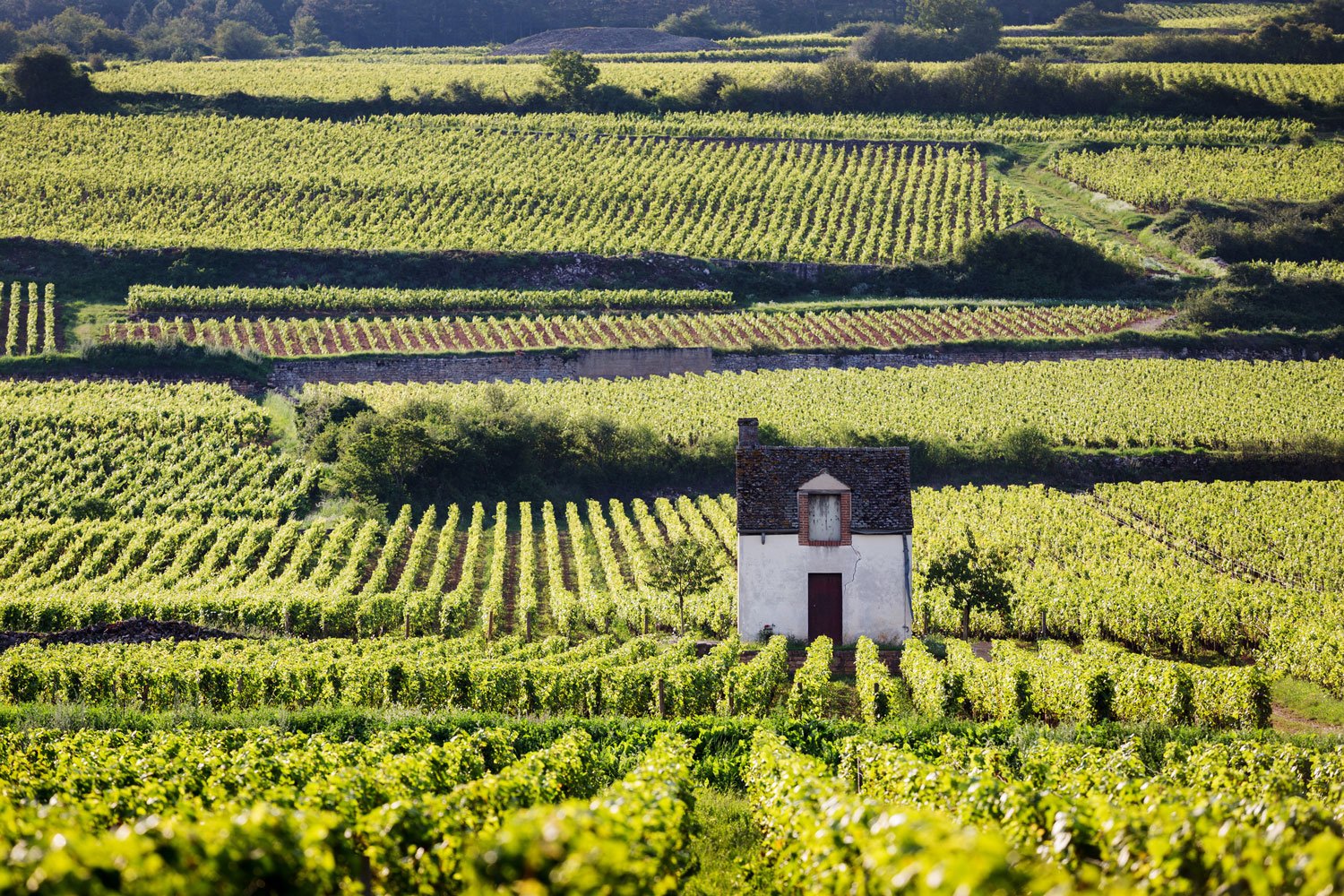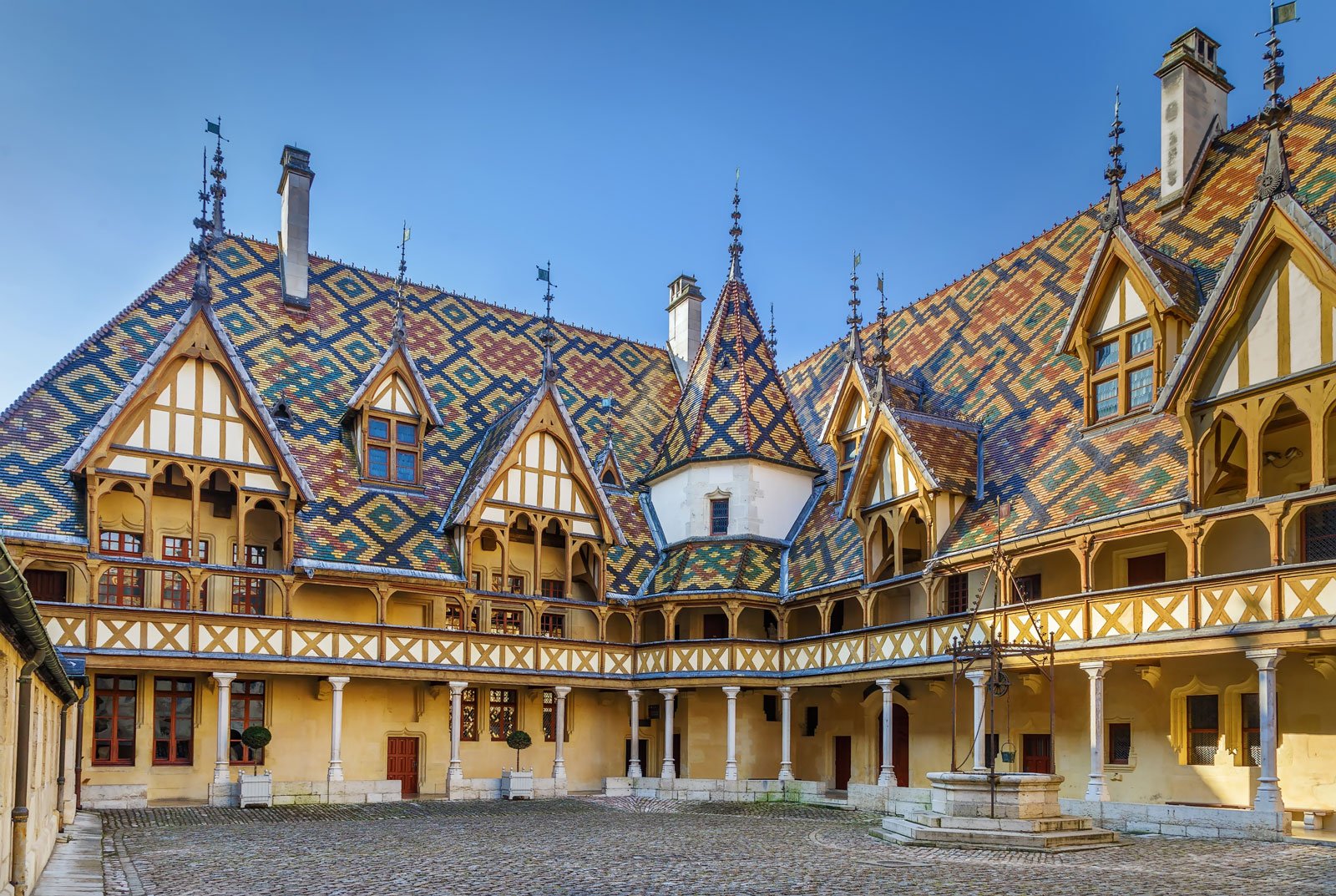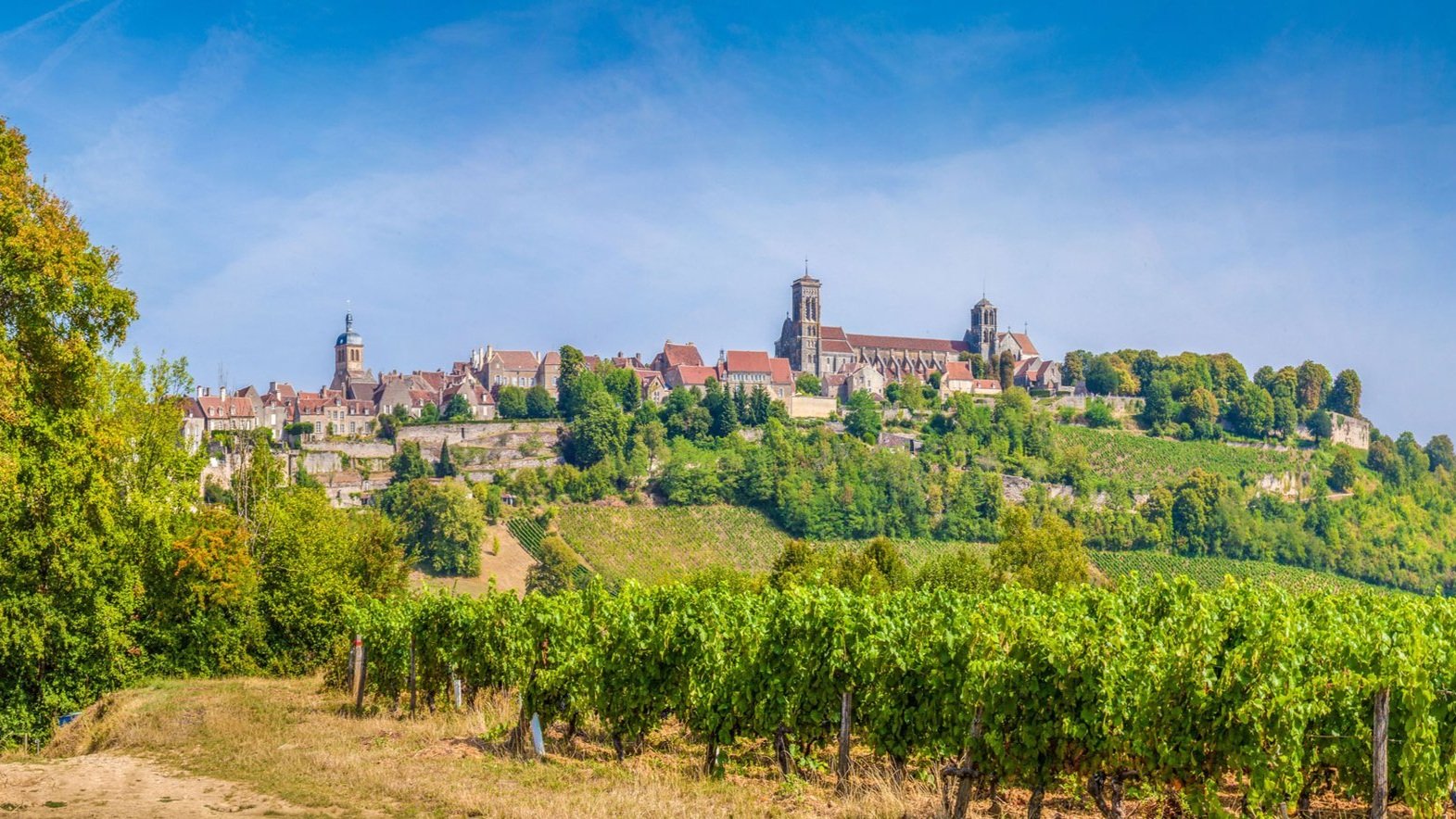
GUIDE TO BEAUNE
Shamistha de Soysa
21 July 2023
It’s a July Saturday morning in Beaune, in the heart of Burgundy, and the Place de la Halle is crammed with market stalls, its open sun-drenched skies now shaded by umbrellas, jealously safeguarding a wealth of products and produce. There are olives in varieties too numerous to mention, charcuterie, condiments, tumescent fruit, earth-fresh vegetables, crusty breads, crafts, the lightest of summer clothing and the inevitable array of mustards from the entry-level concoction to those spiced with truffle, chilli or pinot noir. Next door, within the building of the Place de la Halle, the indoor market offers an array of meats and fish. It’s a heady experience for eyes and ears.
Despite its many attractions, Beaune is not the capital city of the wine-rich French province of Burgundy. That honour falls to Dijon, where incidentally, mustard is no longer made. Yet Beaune has a wealth of features which make it an exceptional destination, as Dr Shamistha de Soysa explains in this destination guide.
Notre-Dame de Beaune, one of the last Romanesque churches in the region to be built in the style of the great Cluny Abbey
WHEN TO GO
November in Beaune sees the annual charity wine auction. The oldest wine auction in the world dating from 1859, it is the centrepiece of three days of festivities. July sees the annual International Festival of Baroque and Romantic Opera. Held over four weekends, 2023 is the 41st iteration of the event, which this year featured counter-tenor Andreas Scholl and the baroque ensemble Les Épopées, usually resident at the Palace of Versailles. Past stars of the festival include luminaries like William Christie and Les Arts Florissants, Paul McCreesh and René Jacobs. The concerts are presented in Beaune’s iconic venues, the thirteenth-century Collégiale Notre-Dame and the Salle Poivres of the Hospices de Beaune. Notre-Dame houses a twelfth-century statue of the Black Madonna and collection of priceless tapestries, depicting scenes from the life of Mary.
Bastille Day in Beaune was a low-key affair with barely a sighting of bunting or parades, occupants of the town on the day preferring to enjoy the public holiday relaxing outdoors. A simple ceremony outside the City Hall, with the town’s brass band playing under rippling tricolours was the only visible acknowledgement of this historic national event.
If neither July nor November suit, there are ample and possibly quieter times of the year when you can entice the senses and fire the intellect amidst the offerings of Beaune and its surrounds. Avoiding Easter, April and May are temperate and perfect for exploring outdoors, while late September and October bring the colours and bustling activities of the grape harvest.
The Hospices de Beaune, with their characteristic colourful roof tiles, to be seen on a number of buildings in the Côte d’Or wine region of Burgundy
WHAT TO SEE
Presiding over the Place de la Halle is the Hôtel-Dieu Museum in the Hospices de Beaune, with its distinctive roof tiles and architectural features dating from the mid-fifteenth century. As well as serving as a concert venue during the music festival, it is a carefully curated and very well-presented museum with audioguides in several languages, chronicling the history of this charitable foundation for the poor, established by Chancellor Nicolas Rolin in 1443. The hospice was built around a large, cobbled courtyard and ran its own vast kitchens, a pharmacy and physic garden.
There is much medical memorabilia and accounts of the early days of surgery and anaesthetics in the displays. The hospice acquired a piece of X-ray equipment in 1908, the technology having been invented by Röntgen in 1895. It proved invaluable to treating the wounded from the 100-year war between France and England. Ironically, its champion in Beaune, Dr Albert Masson, died in 1918 after over-exposure to X-rays.
Detail of Rogier van der Weyden’s stunning fifteenth-century painting of the Last Judgement, one of the most important Flemish works to survive anywhere in the world
The shared hospital ward for the poor, distinct from the paid ward which had heating and more private facilities, contained 30 beds separated from an altar and choir stalls by an ornate rood screen. Through this, the sick could raise their eyes to the magnificent altarpiece depicting the Last Judgement, a large polyptych of fifteen paintings on nine panels painted in oil on oak by Flemish artist Rogier van der Weyden.
For lovers of art, there are several galleries in the town selling paintings and sculptures, antiques and other objects d’art. The Museums of Fine Arts in both Beaune and Dijon contain important regional pieces old and new. The collection in Dijon boasts a famous portrait thought to be of one of its most famous sons, the French baroque composer Jean-Philippe Rameau (1683 – 1764), attributed to the French painter Jacques-André-Joseph Aved (1702 – 1766).
Château Clos de Vougeot, the largest vineyard in the region to bear the Grand Cru appellation and the headquarters of the Confrérie des Chevaliers du Tastevin, a prestigious fraternity of Burgundian wine connoisseurs
WHAT TO EAT & DRINK
History apart, Beaune is gastronomic heaven. The town is peppered with countless cellars and ice-cream stalls; streetside cafes and restaurants serve sophisticated fare alongside simple local specialities like beef bourguignon, Oeuf en Meurette (poached eggs in red wine sauce) and escargots de Bourgogne (snails cooked in garlic, herbs and butter). Try the silky washed-rind Citeaux cheese, made from cow’s milk by the Cistercian monks in the Citeaux Abbey south of Dijon.
A trip to the wine country surrounding Beaune is essential. Travel independently by bicycle or car, or take one of the many walk-and-wine tours on offer and you will discover that the art of viticulture in Burgundy and the classification of its wines are complex. Head north from Beaune on the Côte de Nuits, passing the Domaine de la Romanée-Conti, whose wines can cost tens of thousands of Euros for one of only 5000-6000 bottles produced each year, or head south along the Côte de Beaune to villages like Nantoux and Meursault for a different perspective on the regional wines. A visit to Beaune’s Musée du Vin for insights into the history of winemaking in the region complements the experiences of the vineyards.
GETTING THERE & GETTING AROUND
Beaune has two very well resourced tourist information centres, one in the Place de la Halle and another by the town wall, which also houses the Maison Climat. It opened in 2017 to commemorate the UNESCO heritage listing of the “climates” - the specific criteria of vineyard parcels on the slopes of the Côte de Nuits and the Côte de Beaune, accounting for their different geology and microclimates, vine types and cultivation techniques which have developed since the Middle Ages.
The city of Dijon continues to be synonymous with the manufacture of mustard although there are no longer any moutarderies there. Ironically, 80% of the seeds used to make Dijon mustard are imported from Canada and the recipe for Dijon mustard is not protected or linked to any specific region. However, much like a good wine, moutarde de Bourgogne has a PGI (Protected Geographical Indication) and the seeds of this product must be produced in Burgundy. Just outside Beaune’s medieval walls, within walking distance from its centre, is a mustard factory museum offering a tour and tastings where some surprising facts about the art and science of mustard making are revealed.
Travel to Beaune by car or bicycle, or take the 20-minute train ride from Dijon. It is an exhilarating experience not readily forgotten.
Shamistha de Soysa is an inveterate traveller, with many of her adventures centred around a musical event or festival. She lives in Sydney and is a pianist, choral singer and writer. Her trip to Burgundy was self- funded.
EXPLORING MEDIEVAL BURGUNDY
Dates: 09-18 May 2024
Tour Leader: Dr Kathleen Olive






